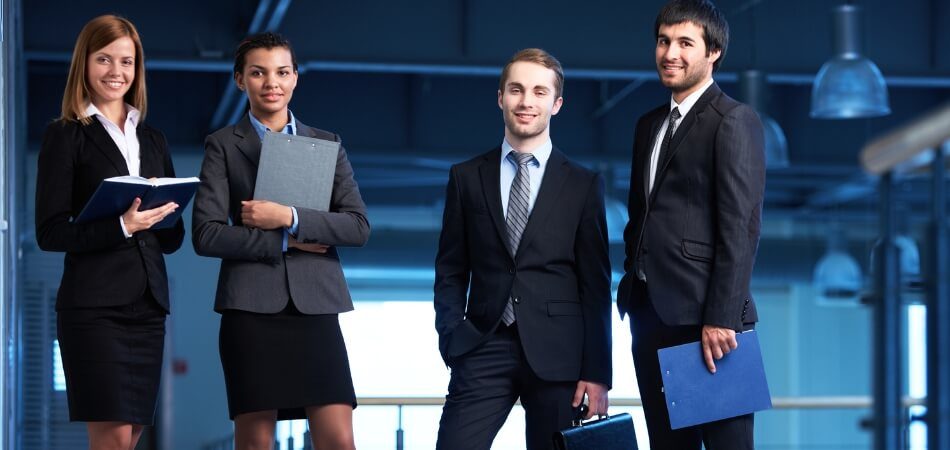Getting ready for a research conference isn’t just about your work – it’s also about how you look. Your appearance matters to your peers, mentors, and potential collaborators. So, what to wear to a research conference?
The best attire is business casual. This works double for speakers, conference presenters, new attendees, and anyone who is unsure of themselves. Generally speaking, the dress code for academic occasions is a basic jacket with pants and a shirt or blouse. Blazers should always be the focal point of any ensemble you choose.
In this guide, we’ll explore conference fashion, finding the balance between comfort and formality. Whether you’re a newbie or a pro, knowing the right conference attire can boost confidence and networking. We’ll cover dress codes, accessories, and grooming for a lasting, positive impression at your next research conference.
Purpose of Research Conference
Attending a research conference plays a pivotal role in the academic and professional world. These events provide an invaluable platform for scholars, researchers, and professionals to present their work, receive feedback, and network. The diversity of ideas and methodologies shared helps broaden perspectives, inspiring attendees to think differently about their work.

Research conferences aren’t just for presenting findings; they’re also about developing connections. Attendees of research conferences held globally have the opportunity to meet like-minded individuals from different parts of the world, promoting collaboration and partnerships. Through these relationships, groundbreaking joint projects can emerge, pushing the boundaries of what individual research might achieve.
These events bolster one’s professional development. Beyond the exposure to new ideas, attendees learn about the latest trends and tools in their field. This continuous learning and engagement ensure that professionals remain updated, relevant, and equipped to contribute effectively to their respective domains.
Importance of Choosing The Right Attire for a Research Conference
Selecting the correct outfit for a research conference is more than just a matter of personal style. It reflects professionalism, signals respect, and can even impact one’s confidence. Here’s why making the right choice matters:
Projecting Professionalism
The right attire showcases a sense of seriousness and dedication. When you dress appropriately, it sends a clear message: you value and respect the event. This boosts the audience’s perception of your commitment and expertise.
Creating First Impressions
First impressions, often made within seconds, can last long after a conference. A well-thought-out ensemble communicates preparation, attention to detail, and dedication. Ensure your attire doesn’t overshadow your presented research.
Boosting Self-confidence
Wearing the right attire can enhance self-assuredness and poise. When you feel good about what you’re wearing, it translates to a more confident presentation. A boost in self-esteem can notably improve your delivery and interaction.
Fostering Effective Networking
The right clothing choice aids in effective networking. It can make you more approachable, open doors for conversations, and help establish meaningful connections. Remember, networking is as crucial as the presentation itself.
Adhering to Cultural Sensitivities
Different cultures might have varied perceptions of appropriate attire. Ensuring your outfit respects and aligns with the host country or institution’s norms is vital. This attentiveness fosters an environment of mutual respect and understanding.
The core of any research conference lies in the exchange of ideas and knowledge, the importance of research presenting oneself aptly cannot be sidelined. Your attire can pave the way for impactful interactions and leave a lasting impression.
What to Wear to a Research Conference?
When prepping for a big event in the academic world, one question often arises: What to wear to a research conference? Your choice can affect not only your personal comfort but also the impressions you make. With that in mind, let’s dive into some guidelines.
Setting the Right Tone
Your attire should reflect the importance of the occasion. Wearing appropriate clothing showcases your respect for the event. It also demonstrates your understanding of academic protocols. Ultimately, dressing right sets a professional tone.
Opting for Business-Casual
Business-casual strikes a balance between formal and relaxed. A blazer paired with trousers is a safe bet. Adding a blouse or shirt completes the look. This attire works well for both presenters and attendees.
Prioritizing Comfort
While looking good is essential, comfort shouldn’t be compromised. Choose shoes you can walk in without pain. Ensure your outfit allows easy movement. After all, you might be in it for several hours.
Versatility Matters
Sometimes, conferences span different settings. Day sessions might lead to evening networking events. Hence, wear something that transitions well. Subtle changes, like accessories, can adjust your look for various occasions.
Considering Cultural Sensitivities
If attending international events, research local customs. Some cultures have specific attire expectations. Respecting these norms showcases your global awareness. It also avoids potential misunderstandings or discomfort.
Accessorizing Wisely
Accessories can enhance or detract from your overall look. Choose pieces that are understated and elegant. Avoid anything too flashy or noisy. Remember, your research should be the focal point, not your jewelry.
Your total conference experience is influenced by your clothing choices, even though your research and presentation abilities are still crucial. It affects comfort, initial impressions, and even networking chances. You can make sure you’re dressed for success by adhering to these rules.
Common Challenges You May Encounter When Preparing for a Research Conference
Preparing for a research conference is no small feat. Amidst the excitement, numerous challenges can emerge, potentially hindering one’s readiness. Let’s explore some of these common hurdles:
- Topic Selection Dilemmas: Choosing a relevant and engaging topic can be daunting. It should resonate with attendees while contributing to the field. Striking this balance often proves challenging.
- Time Constraints: Research often requires deep dives into data. Finding sufficient time to prepare amidst other commitments can be stressful. Time management becomes essential yet difficult.
- Data Collection Issues: Gathering relevant and accurate data is vital. However, accessing some sources can be time-consuming or costly. Ensuring data integrity is another concern.
- Technology Troubles: Presentations often require technological support. From slide design to ensuring compatibility with conference equipment, tech challenges arise. Preparation can be thwarted by unexpected glitches.
- Feedback Gaps: Getting constructive feedback before presenting is invaluable. Yet, finding colleagues available and willing can be tough. Absence of feedback might lead to overlooked flaws.
- Presentation Anxiety: The thought of presenting can induce anxiety. Doubts about one’s oratory skills or facing an audience might crop up. Confidence-building becomes a preparatory necessity.
- Cultural Considerations: For international conferences, cultural awareness is key. Presenting in accordance with local norms requires understanding and adjusting. Overlooking this can lead to misunderstandings.
- Financial Limitations: Attending conferences can be expensive. Between registration fees, travel, and accommodation, costs add up. Budget constraints might hinder optimal preparation.
- Networking Nervousness: Building connections is a primary conference goal. For some, initiating conversations or approaching strangers is intimidating. Overcoming this hesitation is crucial for optimal benefits.
- Attire Apprehensions: Selecting the right outfit, as discussed earlier, has significance. Doubts about appropriateness or comfort can arise. This seemingly minor detail can influence overall confidence.
The journey to a research conference is filled with learning and growth, being aware of potential challenges helps in navigating them effectively, ensuring a fruitful experience.
Tips for Navigating These Challenges
While preparing for a research conference can pose several challenges, effective strategies can help go through these hurdles with ease. Here’s a guide to overcome common obstacles and ensure a rewarding conference experience:
Guided Topic Selection
Begin by reviewing recent publications in your field. Identify gaps or trends in current research. Seek a mentor or peer feedback early on. This collaborative approach ensures topic relevance and interest.
Time Management Mastery
Set clear milestones leading up to the conference. Break tasks into manageable chunks and prioritize. Use tools or apps to monitor progress. Stay consistent in your preparation to avoid last-minute rushes.
Streamlined Data Collection
Start with a clear research question. This focus will guide efficient data sourcing. Collaborate with peers or institutions for shared resources. Always cross-check data sources for reliability and accuracy.
Embracing Technology
Familiarize yourself with the latest presentation tools. Run tech rehearsals, simulating the conference environment. Have backup devices and files ready. This preparation minimizes tech-related disruptions.
Encourage Constructive Criticism
Build a feedback-friendly environment with colleagues. Organize mock presentations to gauge reception and identify improvement areas. Actively seek diverse opinions for a well-rounded perspective. Implement suggestions that align with your core message.
Overcoming Presentation Jitters
Practice is the key to confidence. Familiarize yourself with your content thoroughly. Use relaxation techniques, like deep breathing, before taking the stage. Visualizing a successful presentation can also set a positive mindset.
While the path to a research conference might be sprinkled with challenges, these strategies provide a roadmap to navigate them effectively. With preparation, adaptability, and a proactive approach, you can transform these challenges into stepping stones for a successful conference experience.
Conclusion
It takes more than just academic conversations to successfully operate a research conference. The straightforward question: What to wear to a research conference? is an important one that is frequently overlooked. Selecting appropriate clothing can greatly increase confidence and provide a favorable environment for encounters.
Alongside this, preparing for a conference isn’t always smooth sailing. From selecting relevant topics to mastering the latest presentation tools, challenges are inevitable. But with foresight and determination, these obstacles can be effectively managed.
A successful conference isn’t solely about the depth of research presented. It intertwines meticulous preparation, appropriate attire, and the ability to overcome hurdles, ensuring a well-rounded and enriching experience for all attendees.







